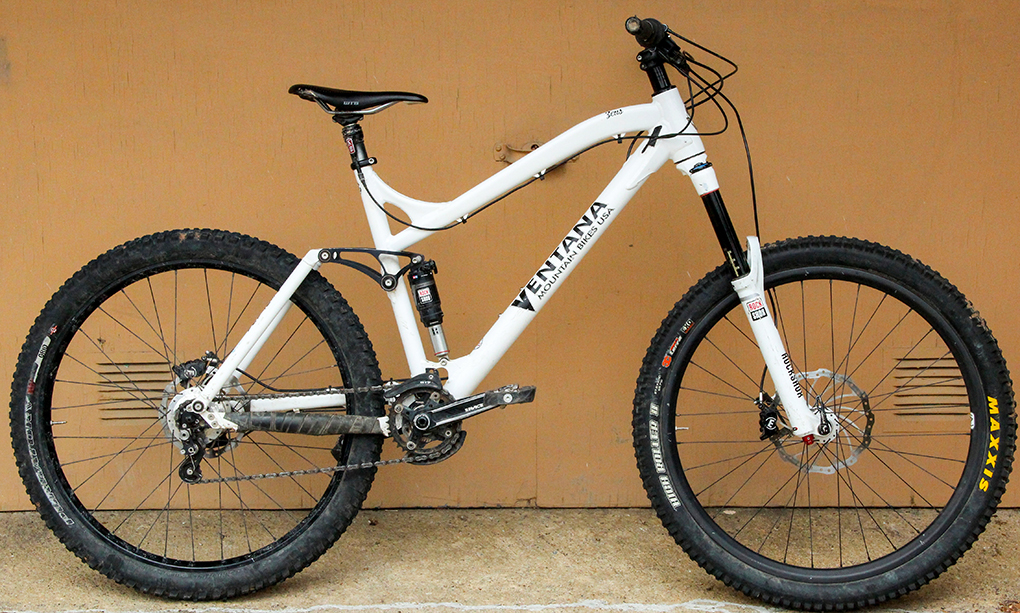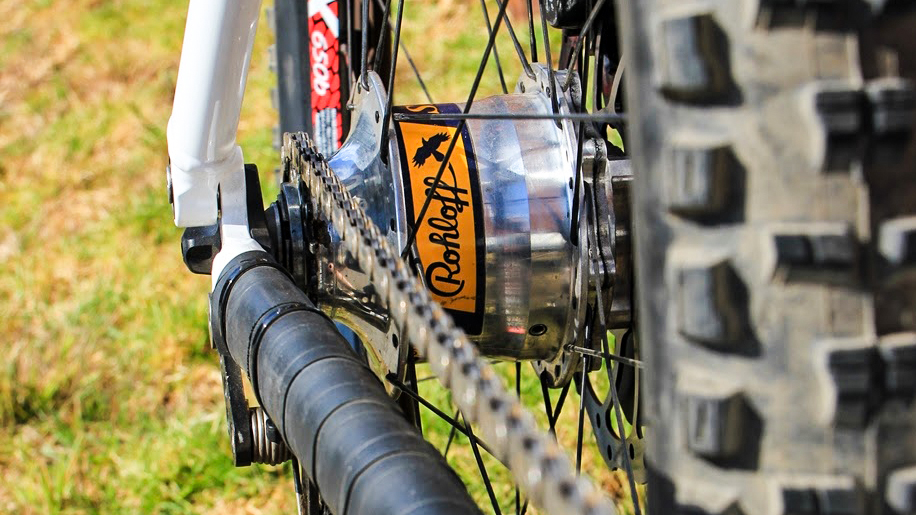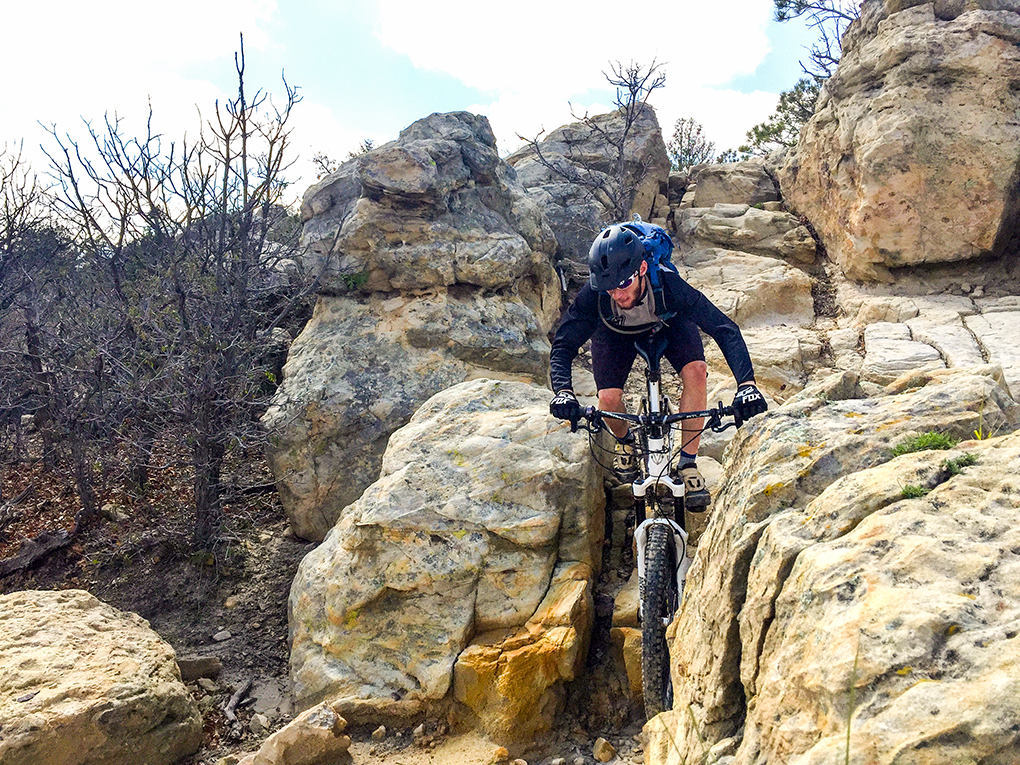[Editor’s Note: When our reviewers aren’t out testing various frames and forks and whatnot, what do their own personal builds look like? Our Reviewers’ Rides series asks some of our riders to detail their setups, and explain why they’ve chosen these particular frames and components.]
Xan Marshland, 5’9”, 140 lbs.
2013 Ventana Zeus 27.5, size Large
The Ventana Zeus has been my main trail bike for the last two years. It handles being hucked, thrashed, and abused incredibly well, all while remaining fairly low maintenance.
When it came time for me to move out to Colorado for college, I knew I would need a bike that was suited for rocky technical rides and long descents. I also wanted a bike that I could grab and go shred at a moment’s notice without having to worry about putting a lot of time into working on it and maintaining it.

This is easy to accomplish if you want to ride a singlespeed steel hardtail, but it gets challenging when you add rear suspension, a dropper post, and the desire to ride down punishing trails on a daily basis. The same bells and whistles that make modern enduro bikes shred so hard are the same ones that sometimes keep us off the trail and in the shop.
Therefore, many of the decisions I made when building this bike were based on keeping it durable and reliable.
The Build (with links to reviews)
Frame – 2013 Ventana Zeus
Fork – Rockshox Pike RCT3, Dual Position, 160mm travel
Shock – Rockshox Monarch RT3
Wheels – Stan’s NoTubes Flow EX, laced to Rohloff and Hope hubs
Drivetrain – Rohloff SPEEDHUB 500/14, 34T Raceface narrow-wide chainring, Raceface Turbine cranks, 175mm
Brakes – Magura MT5 NEXT, 203mm rotor front, 180mm rear
Seatpost – KS LEV, 150mm travel
Stem – Syntace Megaforce 2, 30mm
Saddle – WTB Devo
Handlebar – Raceface Atlas, 760mm
Tires – Maxxis Highroller II 2.4″ front, Specialized Purgatory Grid 2.3″ rear
Grips – Raceface Half Nelson
Pedals – Shimano DX
Obviously, the most unique aspect of this bike is the Rohloff SPEEDHUB drivetrain in place of a derailleur, so I’ll talk about that first. For those who aren’t familiar with the Rohloff hub, it is similar to internal hubs you might see on a commuter bike (e.g. the Shimano Alfine or Nexus), but with 14 speeds that give the bike about the same range as a 3×10 setup.

Shifting is more automatic and instantaneous than with a derailleur setup, since the rider doesn’t have to pedal to change gears. However, you can still shift under power. Since the transmission is hidden inside the hub, shifting is not affected at all by weather or trail conditions. Also, unlike the Alfine and Nexus, the Rohloff is utterly bombproof.
Ventana Mountain Bikes USA has been building frames by hand for decades, with a reputation for building bikes that can be ridden hard for years. Some friends and former coworkers of mine have had a lot of experience with the brand, and regularly recommended their stuff to anyone interested in a frame with durability to rival that of the Rohloff.
At the time of this purchase, most of my riding was done on 26ers, which I enjoyed for their playful characteristics. I’ve had a great time on 29ers in most riding situations, but I’ve never had quite as much fun throwing one around through techy spots or off drops. So while I loved many of the attributes of a 29” wheel, I wasn’t quite ready to commit to the wheel size for a long-travel bike.
In mid-2013, 650b began to trickle into the mainstream, and I figured that splitting the difference between the 26” and 29” wheels would work well for my riding style. I opted for the 160mm travel 650b Ventana Zeus, and haven’t regretted my decision at all.

For tires, my go-to is the Maxxis High Roller II 2.4” with EXO protection front and rear, set up tubeless with Stan’s sealant. That said, I’m currently experimenting with a 2.3” Specialized Purgatory with Grid casing in the rear, in hopes that the casing might be more durable since I’ve torn a few High Rollers on particularly rocky trails. So far the casing has held up well, although I may swap it out for something with slightly beefier side knobs soon.
I run a 160mm Rockshox Pike RCT3 Dual Position fork. I won’t rave about the Pike too much in this piece since it has already received plenty of love, but I will say that it is definitely one my favorite parts of the build, and certainly the best trail fork I’ve ridden.
NEXT: Component Check, On the Trail

Cool,
Although I don’t do this type biking at 59 I enjoyed your article. You kept me engaged with your knowledge of the equipment and willingness to share how you chose to build your bike. Keep riding